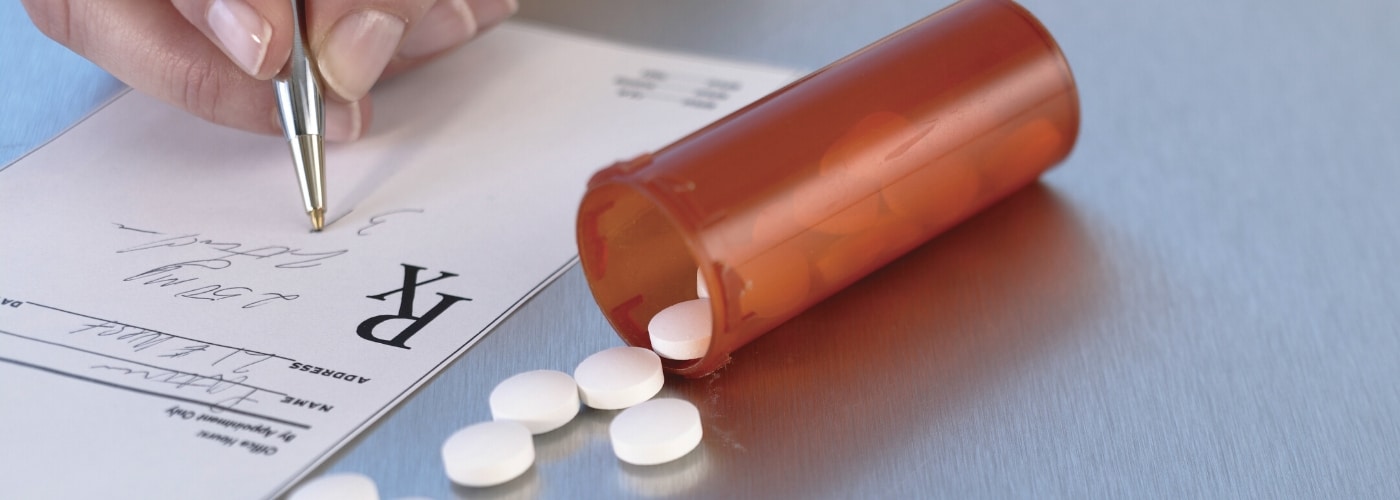According to the National Institute on Drug Abuse (NIH), more than 30 percent of overdoses involving opioids also involve benzodiazepines, a type of prescription sedative commonly prescribed for anxiety or to help with insomnia. Benzodiazepines (sometimes called “benzos”) work to calm or sedate a person by raising the level of the inhibitory neurotransmitter GABA in the brain. Common benzodiazepines include diazepam (Valium), alprazolam (Xanax), and clonazepam (Klonopin), among others.
Both opioids and benzos sedate and suppress breathing, which is very dangerous and increases the risk of an overdose, yet these drugs are commonly prescribed together.

Table of Contents
Valium is a Dangerous Drug
In 2016, the Centers for Disease Control and Prevention (CDC) issued new guidelines for prescribing opioids. They recommend that clinicians avoid prescribing benzodiazepines concurrently with opioids whenever possible. Both prescription opioids and benzodiazepines now carry FDA “black box” warnings on the label, highlighting the dangers of using these drugs together. People being prescribed any medications should inform their doctors about all of the other drugs and medications they use. Patients should consult with their doctors about the potential dangers of using various medications and substances together, including alcohol.
Among the most common prescribed Benzodiazepines or benzos are Valium, Xanax, and Klonopin. These are medications prescribed short term for the treatment of anxiety and insomnia. Short-term use is because, after a few weeks, most people will develop a physical dependence. It doesn’t matter if you were taking the prescription as directed; there is a high chance that once you stop taking the drug, you will start to have some form of withdrawal after a few hours or days.
For the use of Valium, just like any other substance, the severity of your withdrawal will depend on many factors:
- Your current Valium dose
- How long you’ve been taking it
- Whether you regularly mix it with other drugs or alcohol
- Your age and physical health
- And more
Valium Withdrawal is Very Uncomfortable
Valium withdrawal symptoms are pretty similar to the withdrawal effects of alcohol. Both are probably the worst withdrawal you could experience and the only one you could die from if you don’t undergo supervised medical detox. You can feel anxious and have flu-like symptoms, and they can be severe or mild, and they can come and go.
Since Valium is a long-acting benzodiazepine, it has a long half-life from 30 to 40 hours, so it can take a while for the withdrawal symptoms to start. It can start from two to seven days after the last time you took the drug. The withdrawal symptoms can last on and off from two to eight weeks. The withdrawal symptoms of Valium will affect you physically and mentally.
Physical manifestations of Valium withdrawal can include:
- Hyperventilation
- Troubled sleeping (nightmares, waking in the night)
- Muscle spasms
- Loss of appetite
- Weight loss
- Sweating
- Headaches
- Tremors
- Dizziness or unsteadiness
- Muscle aches and pains
- Blurred vision or other visual disturbances
- Tinnitus (ringing in the ears or hearing a sound that isn’t there)
- Grand mal seizures
The psychological symptoms of Valium withdrawal can include:
- Anxiety
- Irritability and agitation
- Insomnia
- Panic attacks
- Restlessness
- Nightmares
- Strange bodily sensations
- Depression
- Abnormal perceptual changes (things touch, taste, or feel different)
- Problems concentrating
- Trouble remembering things
- Delusions
- Confusion
There is also a second stage to the withdrawal after the initial, post-acute withdrawal. This could last anywhere from months to a year. Again this can differ from person to person according to their use.
Remedies for Valium Withdrawal Symptoms
As a depressant, benzos slow down all bodily functions. The signal from the brain to other parts of the body and brain is slowed down. Essential functions from walking, going to the bathroom, etc., become very difficult. When coming off Valium, your brain and body forget how to do these essential functions independently.
To gain these functions back naturally, there are many options. Simple eye-hand coordination activities can help immensely, such as knitting, journaling, taking walks, doing yoga, meditation, and more. Yoga and exercising can also help with the aches and pains you will witness when coming off Valium.
You may go about getting off Valium by tapering or cold turkey. Still, the best and most effective way to remedy Valium withdrawal is to complete a medical detox where you can be supervised, and at Allure Detox, we can help.
West Palm Beach Valium Detox
Due to the risks associated with Valium detox, this process should only be carried out under medical supervision. Attempting a “home detox” can be very dangerous. This danger can be reduced by adopting a structured detox, which involves a tapering protocol and comfort medication and counseling. This helps to minimize medical risks and discomfort. In addition, tapering also promotes:
- Better engagement and participation in the detox process
- Increased tolerance to withdrawal symptoms
- Reduced risk of relapse
Our Valium detox in West Palm Beach, Florida, will help you (or your loved ones struggling with Valium addiction) stop using Valium and begin the process of recovery.
FAQ
How do you reduce Valium Withdrawal Symptoms?

